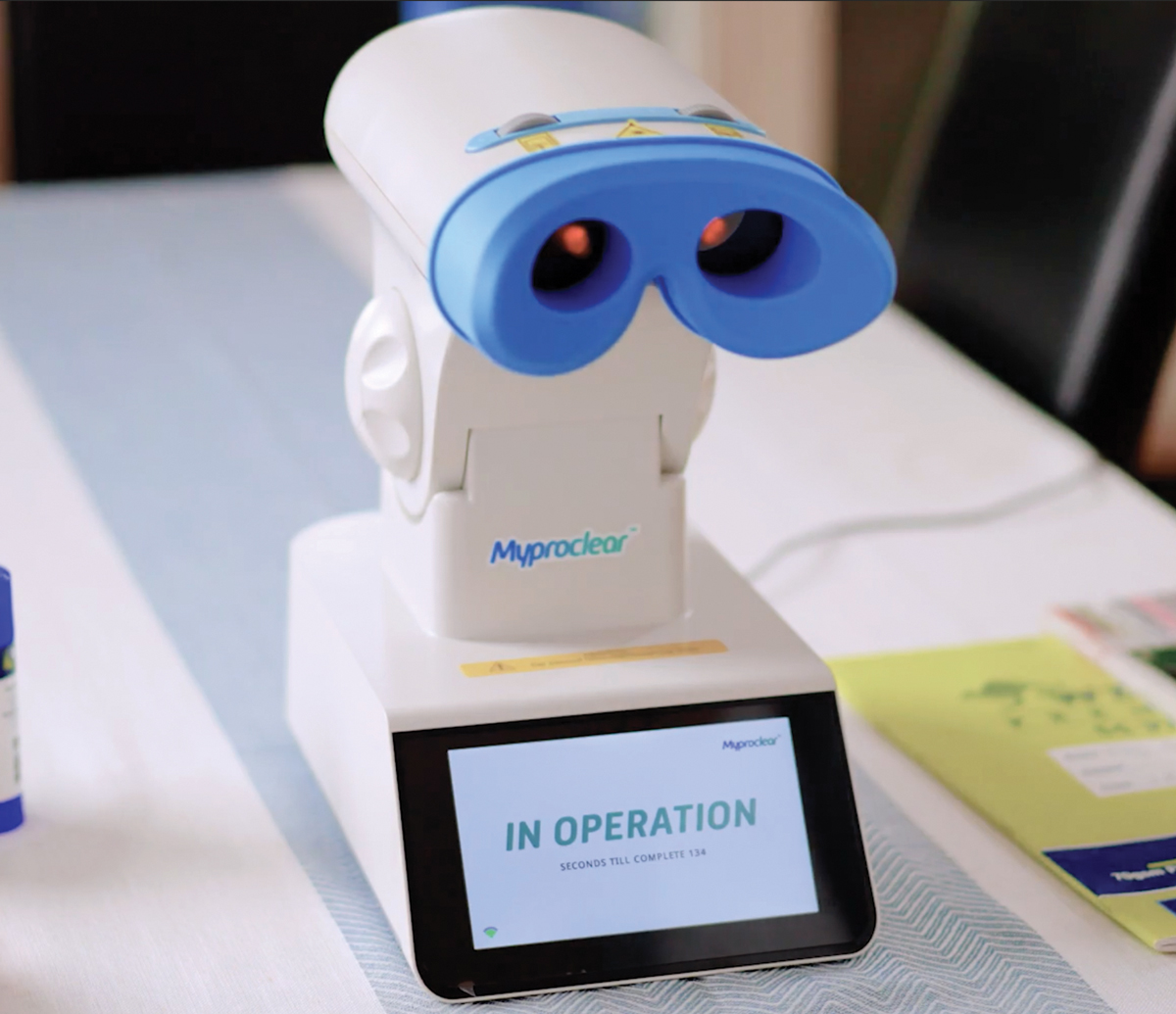 |
|
Study shows low-level red-light therapy can actively prevent sight-threatening complications associated with axial length elongation. Photo: Eyerising International. Click image to enlarge. |
Although axial length (AL) elongation in myopia is considered irreversible, researchers recently aimed to systemically report unexpected AL shortening observed after repeated low-level red-light (RLRL) therapy, an intervention available in some international locations but not yet the US. They found that age and baseline AL were related to the degree of benefit from this treatment.
A total of 264 myopic children aged eight to 13 allocated to RLRL treatment (intervention group) or a single-vision spectacle (control group) were included. AL was measured at baseline, one, three, six and 12 months of follow-up. AL shortening was defined as AL reduction from baseline to follow-up at three cutoffs: 0.05mm, 0.10mm and 0.20mm.
Nearly a quarter of children had 0.05mm of AL shortening following 12 months of RLRL therapy. The authors suggest AL shortening could be due to choroidal thickening that would push the retinal pigment epithelium forward due to the optical biometric device measuring the distance from the anterior surface of the cornea to the RPE.
“We confirmed significant choroidal thickening after RLRL treatment, but this could only explain 28.3% of AL shortening,” the authors noted. “This indicates the observed AL shortening might be related to true scleral remodeling or shortening, rather than an apparent shortening due to choroidal thickening.”
AL shortening >0.05mm occurred in a quarter of children using RLRL treatment, and this was extremely rare among children in the control arm. AL shortening was also more common among older children.
“The effect of age on response to RLRL might be due to the different retinal profile or intuitive greater myopia progression in younger children. These treatments are likely fighting an uphill battle against factors that threaten concomitant AL elongation, so in the future it would be of interest to determine if a bolus dose of RLRL is likely to curtail myopia progression further in children and change their course of disease.”
The greatest AL shortening was observed at the one-month visit, and the extent of AL shortening gradually decreased and maintained at the same level until the end of the study. From the inception of RLRL therapy to the 12-month follow-up visit, AL shortening ranged from -0.05mm to -0.31mm, with a mean of -0.156mm at the 12-month visit among children with AL shortening in the intervention group.
“This data suggests that AL shortening is more likely to be maintained at a certain level rather than further increase over time. This implies that this AL shortening will unlikely fully recover a myopic eye to an emmetropia; however, longer follow-up durations are paramount to exploring the long-term response to RLRL therapy,” the authors concluded.
Wang W, Jiang Y, Zhu Z. et al. Axial shortening in myopic children after repeated low-level red-light therapy: post hoc analysis of a randomized trial. Ophthalmol Ther. January 31, 2023. [Epub ahead of print]. |


